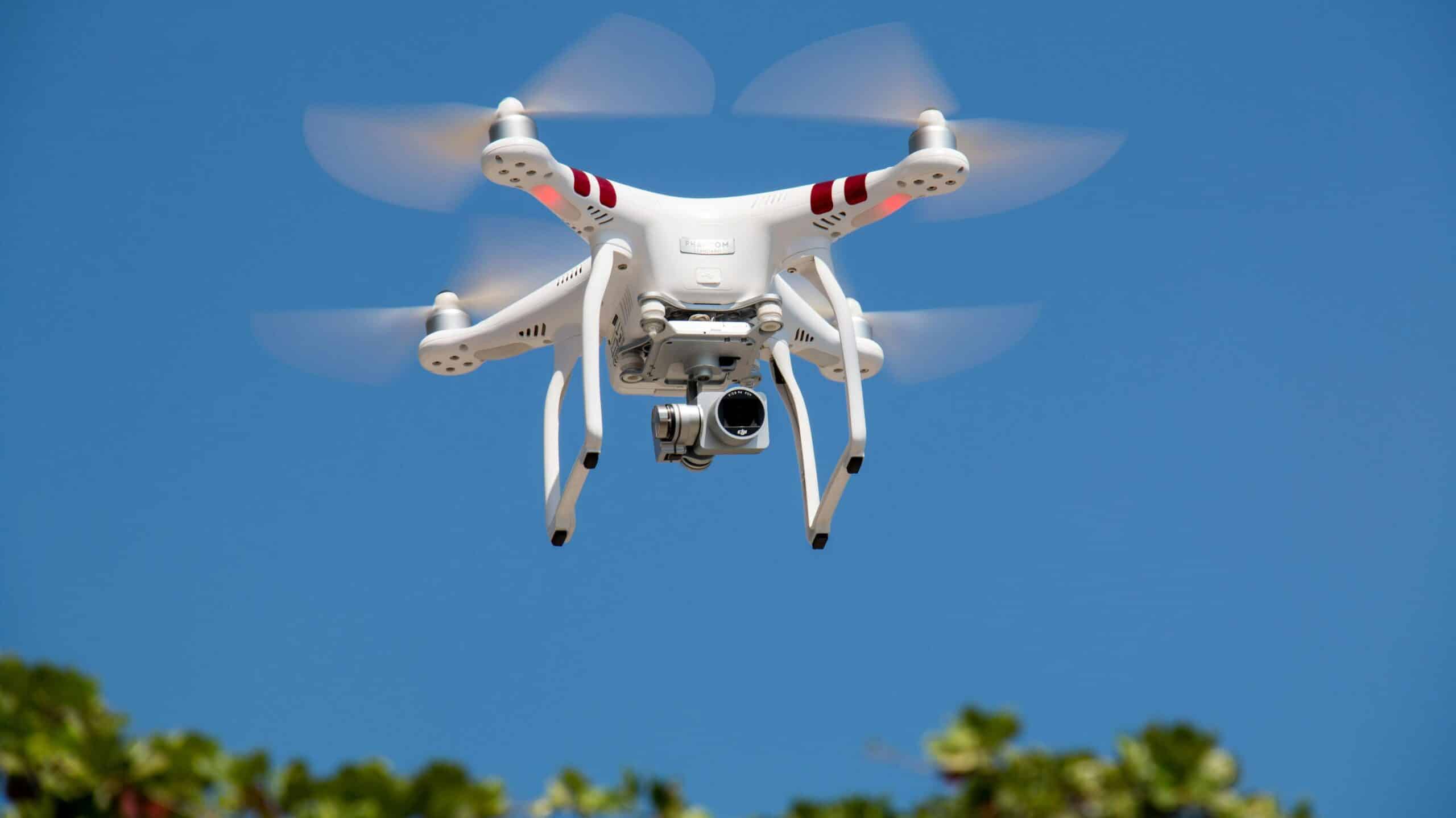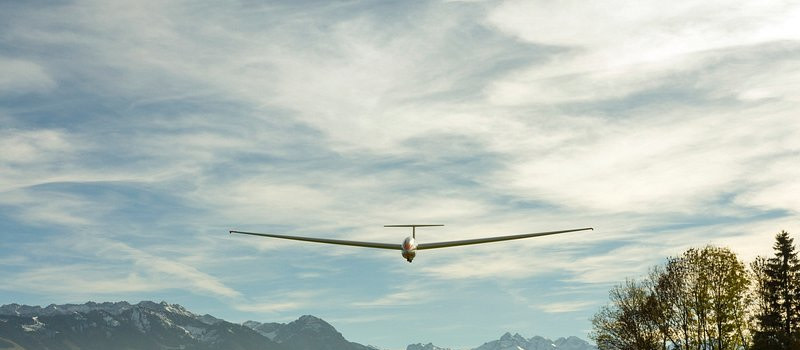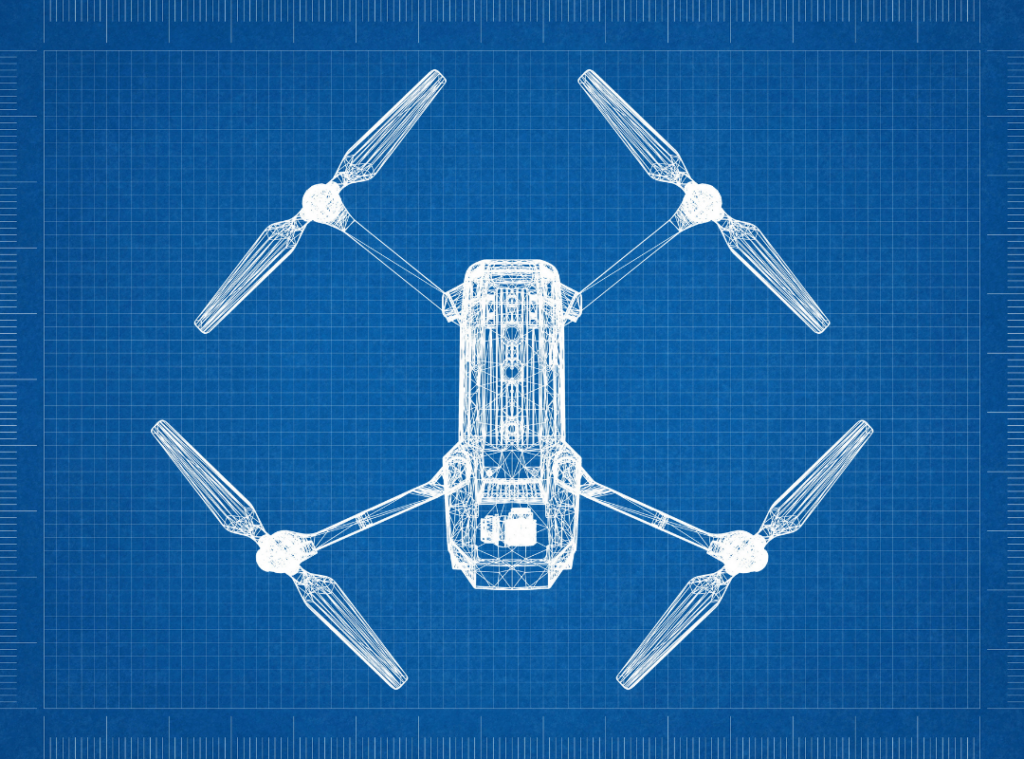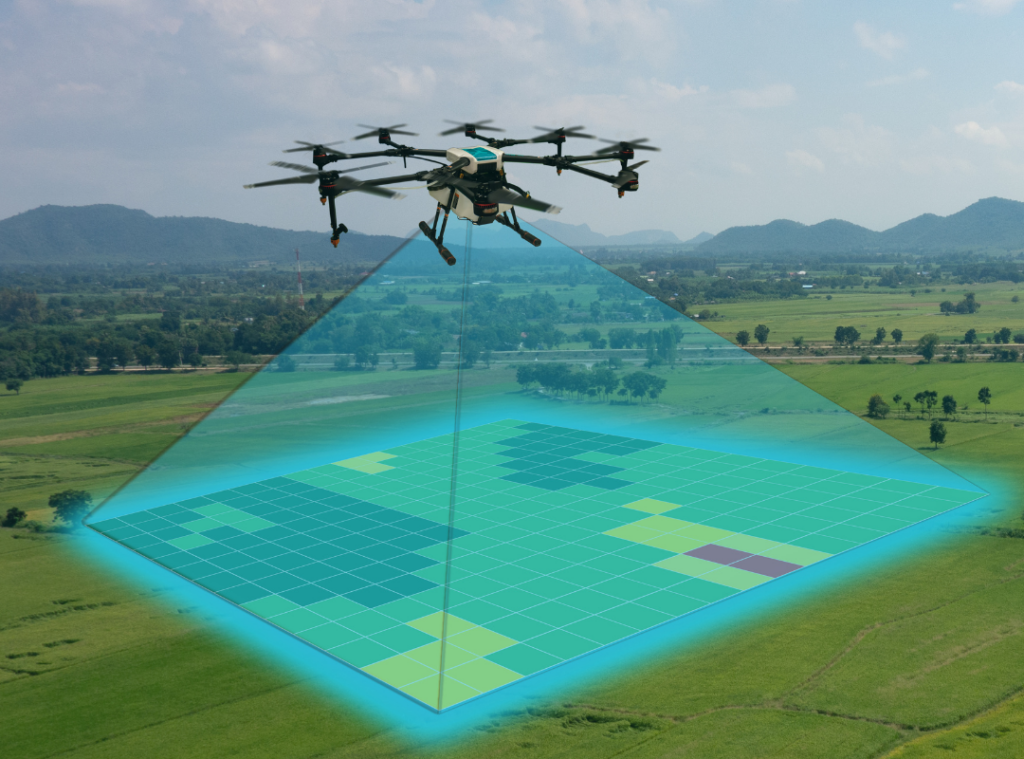Drones are becoming an increasingly necessary and versatile part of the construction industry. While previously used primarily for fly-over marketing videos, the types of drones have evolved – and their capabilities are transforming the construction industry. New technology and more robust drone services have optimized the viewing, measuring, aerial mapping, and surveying processes, making the use of drones in construction faster and more cost-effective than human counterparts.

Types of Drones Used in Construction
There are two main types of drones used in construction: fixed-wing and rotary. Different types of drones empower construction professionals to optimize their workflow on the site and between teams – yet they are used for very different tasks.
Fixed-Wing Drones
The fixed-wing drone, designed like an airplane, can reach higher altitudes, but can only fly forward. These types of drones are used for surveying large areas of land.
Fixed-wing drones are a type of unmanned aerial vehicle (UAV) designed with a single rigid wing, similar to traditional manned aircraft. Unlike rotary drones, fixed-wing drones rely on forward motion to generate lift, enabling them to cover larger distances and fly for extended periods. This makes them particularly well-suited for surveying and mapping large areas quickly and efficiently. Fixed-wing drones can achieve higher speeds and greater flight stability, making them ideal for projects that require extensive aerial coverage and high-resolution data collection.

Construction Use Case
In the construction industry, fixed-wing drones are primarily used for large-scale land surveys, topographic mapping, and environmental monitoring. Their ability to cover vast areas in a single flight makes them invaluable for pre-construction site assessments, where detailed and accurate mapping of the terrain is crucial. Equipped with advanced sensors such as LiDAR and high-resolution cameras, fixed-wing drones can generate precise 3D models and orthomosaic maps, providing essential data for planning and design.
These types of drones are also commonly used to monitor infrastructure projects, track progress over time, and identify potential issues related to land use, erosion, and environmental impact. The efficiency and accuracy of fixed-wing drones significantly reduce the time and cost associated with traditional surveying methods, enhancing project planning and execution.
Here are some of the most common uses of fixed-wing drone types:
- Large Area Mapping
- Site Surveying
- Agricultural Applications
- Infrastructure Inspection
- Environmental Monitoring
- Security and Surveillance
Rotary Drones
The rotary drone, also known as rotary-wing drones or multirotor drones, has a rotor design that allows them to hover in place and remain stable, making them easier to control than fixed-wing drones.
These types of drones are characterized by their multiple rotors, typically ranging from four (quadcopters) to eight (octocopters), which provide vertical lift and enable precise maneuverability. The ability to hover in place, take off and land vertically, and perform agile movements makes them a good option for aerial inspections, structural scans, drone photography, and surveillance over short distances.

Construction Use Case
In the construction industry, rotary drones are invaluable for their ability to capture high-resolution images and videos from multiple angles, aiding in detailed site inspections and monitoring progress. Equipped with advanced sensors and cameras, some of these drones can conduct thermal imaging, detect structural defects, and create accurate 3D models of construction sites. This level of detail helps project managers and engineers identify potential issues early, improve safety protocols, and enhance overall project efficiency.
The relatively small size and portability of rotary drones make them an ideal choice for urban construction projects, where space constraints and the need for precise, real-time data are critical.
Here are some of the most common uses of rotary drone types:
- HD Aerial Photography and Drone Videography
- 3D Modeling, Mapping, and Surveying
- Infrastructure Inspection
- Security and Surveillance
- Environmental Monitoring
Optimizing Construction Work with Drones
Drones are now being used for various time and cost-saving tasks such as equipment tracking, topographic mapping, land surveys, personnel safety, remote monitoring, progress reports, structure inspection, targeted progress photography, measurement of stockpiles, and security surveillance complimenting man guards.
Easy Identification with Infrared Cameras
Certain types of drones equipped with thermal imaging cameras can also detect issues that are not visible to the naked eye, such as water leaks or heat loss, ensuring that problems are identified and addressed early. This technology not only enhances the quality and safety of construction projects but also reduces delays and costs associated with unexpected issues.
Better Planning and Construction Project Management
In addition to these applications, drones are revolutionizing project planning and management through the creation of detailed 3D models and digital twins. These advanced models provide construction project managers with accurate, up-to-date visualizations of the construction site, allowing for better decision-making and more efficient resource allocation.
Enhanced Jobsite Security Systems
Drones have become essential in security systems, providing surveillance and rapid response with high-quality cameras. They offer comprehensive aerial views for monitoring large areas, critical infrastructure, and events, and can access hard-to-reach or dangerous locations. Surveillance drones support real-time intelligence gathering, improving the efficiency and safety of security operations and decision-making during incidents.
Efficient Worksite Safety Inspections

Drones significantly enhance safety inspections on construction sites by providing efficient access to hard-to-reach areas, capturing detailed and accurate data with high-resolution cameras and sensors, and offering real-time monitoring of ongoing activities. They reduce the need for scaffolding and cranes, thereby lowering costs and minimizing risks for workers.
Drones enable faster identification and remediation of safety hazards, systematic documentation, and improved communication among stakeholders. This technology not only ensures thorough structural integrity checks and environmental monitoring but also contributes to an overall safer work environment by reducing the physical demands and dangers faced by human inspectors.
The Evolution of Drone Technology

The different types of drones and their capabilities have rapidly evolved in recent years. In the near future, we might see drones take the place of cranes, lifting thousands of pounds of material around the jobsite or onto the roof. Organizations are already working on creating new types of drones that will be able to lift up to 550 pounds specifically to facilitate the transportation of building materials. Also, many organizations with delivery services already turned to heavy lift and cargo drones to deliver equipment and supplies since conventional air and ground methods can be costly and dangerous.
As technology advances, new types of drones will be able to take on more and more construction tasks. Our newly announced integration with DroneDeploy puts TrueLook in the right position to leverage the current and future capabilities of drones within a highly dynamic industry.
How Are TrueLook Customers Using Drones?
At TrueLook, we’ve seen a significant uptick in the use of drones to complement our camera solutions. Many of our customers utilize drones for progress tracking and capturing high-resolution images and videos that provide stakeholders with detailed updates. The integration of drones with construction cameras enhances project management, improves safety, and boosts overall efficiency, delivering significant value.
Final Word: Types of Drones in the Construction Industry
In today’s market, the different types of drones available—from agile rotary-wing drones to efficient fixed-wing models—offer construction professionals powerful tools to optimize workflow and save money. These drones enhance precision in site inspections, land surveys, and progress monitoring, enabling better project management and decision-making.
By reducing manual labor and providing detailed, real-time data, drones significantly cut costs and improve overall project efficiency. As technology continues to advance, the role of drones in the construction industry is set to expand, further driving innovation and cost-effectiveness.
Ready to take your project to new heights with cutting-edge aerial visibility? Explore our trusted partners FlyGuys and DroneDeploy to see how advanced technology can enhance your construction site marketing and documentation. Contact us now to schedule a free consultation and see firsthand the difference TrueLook technology can make for your next project.

